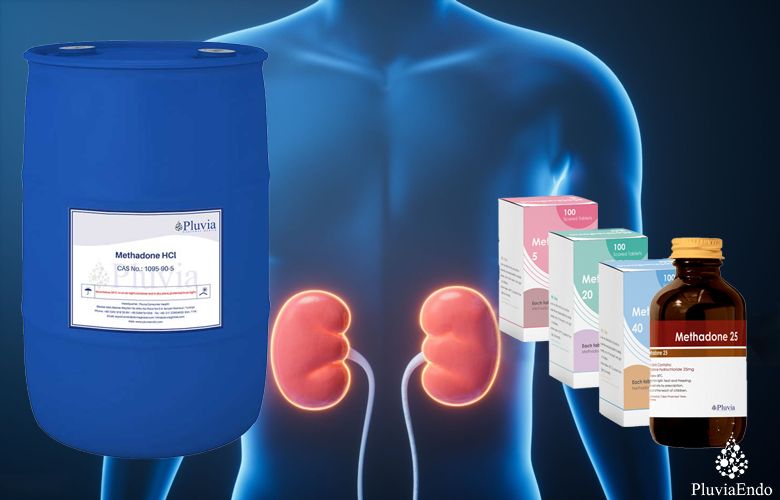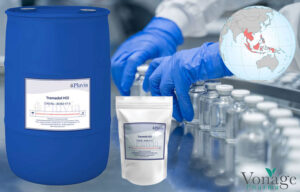The primary question many individuals have is: how long does methadone stay in urine? Methadone is a synthetic opioid that serves two primary purposes: it is used for pain management and as part of medication-assisted treatment for those struggling with opioid use disorder.
Understanding how long methadone stays in urine is crucial for patients undergoing treatment, as well as for those who may be subject to drug testing. This blog post will explore the detection time of methadone in urine, factors influencing this duration, and the implications for users.
The Detection of Methadone Stay In Urine
Generally, methadone can be detected in urine for approximately 7 to 14 days after the last dose. However, several factors can influence this timeframe, including individual metabolism, frequency of use, and dosage.
- General Detection Time:
For most individuals, methadone can be detected in urine from 24 hours up to 14 days after ingestion. The exact duration depends on various factors such as the individual’s health status and how long they have been using methadone.
- Metabolites:
Methadone is metabolized in the liver into several metabolites, with EDDP (2-Ethylidene-1,5-dimethyl-3,3-diphenylpyrrolidine) being the primary one. Both methadone and EDDP can be detected through specialized urine tests. The presence of these metabolites can sometimes extend the detection window beyond that of methadone itself.
- Testing Methods:
Urine tests are the most common method for detecting methadone use due to their non-invasive nature and relatively long detection window compared to blood or saliva tests. Standard urine drug screens often include a panel specifically for opioids.
Factors Influencing Detection Time
Several factors can affect how long methadone stays in urine:
- Dosage:
Higher doses of methadone may take longer to clear from the body. For instance, if a patient is prescribed a higher dosage for chronic pain management or opioid dependence, it may extend the detection window. Patients taking larger doses may find that methadone remains detectable for a longer period compared to those taking lower doses.
- Frequency of Use:
Regular users may find that methadone accumulates in their system, resulting in a longer detection period. Conversely, infrequent users may eliminate it more quickly. Chronic use leads to a steady state in which the drug accumulates, making it detectable for extended periods.
- Individual Metabolism:
Each person’s metabolic rate significantly affects how quickly the body processes and eliminates drugs. Age, weight, liver function, and overall health can influence metabolism. Individuals with faster metabolisms may process and eliminate methadone more quickly than those with slower metabolisms.
- Hydration Levels:
Staying hydrated can sometimes dilute urine concentrations, potentially affecting test results. However, individuals should not rely on this to evade detection. While drinking plenty of water can help with general health and kidney function, it does not significantly alter the detection window of methadone.
- Other Substances:
The use of other medications or substances can interact with methadone metabolism and alter how long it remains detectable in urine. Certain medications may inhibit or enhance liver enzymes responsible for metabolizing methadone.
Implications of Detection of Methadone Stay In Urine
Understanding how long methadone stays in urine is particularly important for individuals who may be subject to drug testing:
- Employment and Legal Testing:
Many employers and legal entities require drug testing that can include methadone. Knowing the detection window helps individuals prepare for potential screenings. Failing a drug test due to unauthorized use of methadone could have serious implications for employment or legal matters.
- Medication-Assisted Treatment Programs:
Patients enrolled in medication-assisted treatment programs should recognize that healthcare providers monitor their compliance with treatment through urine tests to ensure proper use of prescribed medications. Regular testing helps ensure that patients adhere to their treatment plans while preventing misuse.
- False Positives:
While false positives for methadone are rare, individuals need to communicate openly with healthcare providers about their medication history if they are subject to drug testing. If a healthcare provider prescribes other medications that could potentially cause a false positive on a drug test, the patient should disclose this information beforehand.
- Legal Implications:
For individuals involved in legal proceedings or on probation, understanding the detection time is crucial as it could affect their legal standing or compliance with court orders related to substance use.
Pluvia Endo’s Methadone Products
For those considering or currently using methadone as part of their treatment regimen, it’s essential to choose high-quality products from reputable manufacturers. Pluvia Endo offers a range of methadone products that include:
- Methadone HCl
- Methadone Hydrochloride 40 mg
- Methadone 20 mg Hydrochloride
- Methadone Hydrochloride 5 mg
These formulations meet various patient needs while ensuring safety and efficacy during treatment.
Methadone Stay In Urine in Conclusion
In summary, understanding how long methadone stays in urine is vital for patients using this medication for pain management or opioid dependence treatment. Typically, detectable for up to 14 days after the last dose, several factors—including dosage, frequency of use, and individual metabolism—can influence this timeframe.
Patients can better navigate their treatment plans and any associated drug testing requirements by staying informed about these aspects and utilizing quality products like those offered by Pluvia Endo. If you have further questions regarding your specific situation or need assistance with your treatment plan, consult your healthcare provider for personalized guidance.
By understanding both the pharmacokinetics of methadone and its implications for daily life and treatment adherence, patients can make informed decisions about their healthcare journey while effectively managing their conditions.







